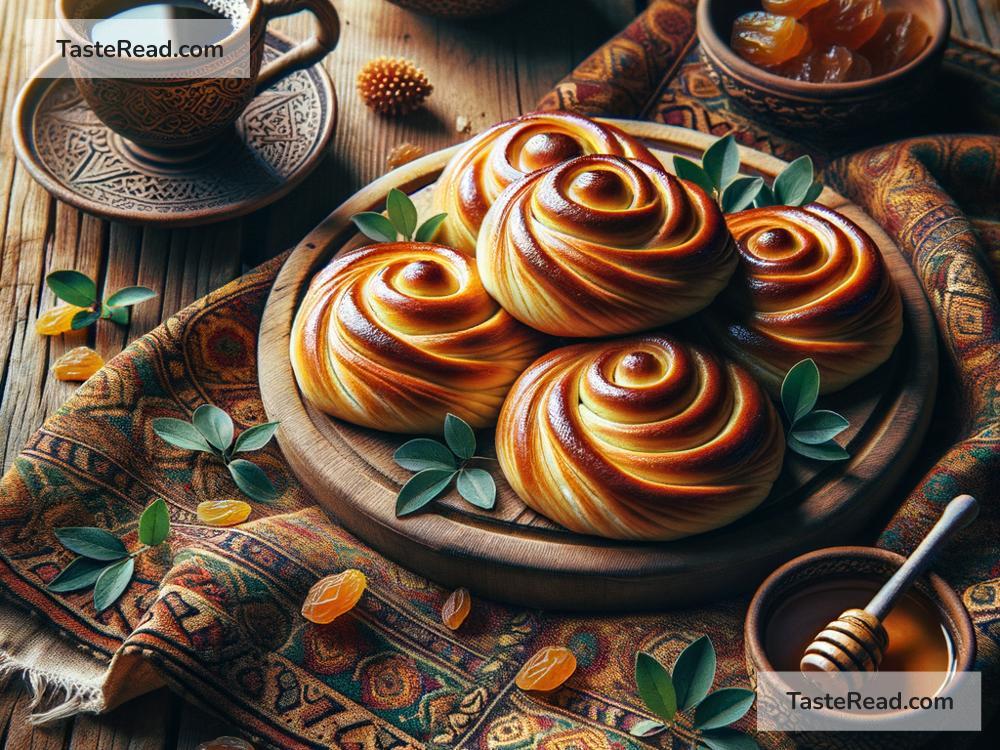Celebrating the Rustic Complexity of Armenian Gata Pastries
Armenian cuisine holds a treasure trove of flavors, traditions, and stories. Some dishes go beyond being simply food—they become symbols of love, history, and community. Among the many gems of Armenian baking is the beloved gata, a rich and rustic pastry that is as complex in meaning as it is in flavor. If you’ve never tried gata, you’re missing out on a delightful experience filled with layers of butter, flour, sugar, and centuries of tradition baked into every piece.
What Is Gata?
Gata is a traditional Armenian pastry with a flaky, buttery crust and a soft filling that’s sweet but not overly so. Some people describe gata as a cross between a pie and a bread, while others compare it to shortbread filled with sweet goodness. What makes gata so special is not just its taste, but also how it has become a symbol of Armenian culture and hospitality.
The pastry can be shaped in different ways depending on where it’s made. In some regions, gata is large and round, resembling a festive cake, while in others it’s baked into smaller, individual portions. The fillings can also vary, with each family recipe adding its own unique spin. However, the most traditional filling is called khoriz, made from simple ingredients like flour, butter, sugar, and sometimes sour cream.
A Pastry Full of Tradition
The history of gata goes back hundreds of years. Armenians have passed down the art of making gata from generation to generation, not just as a recipe, but as a tradition. It’s more than a snack or dessert—it’s a part of festivals, gatherings, and religious celebrations.
One of the most beautiful traditions involving gata is the Armenian holiday called Barekendan, which is similar to Mardi Gras or Carnival. On this day, families bake gata and share it as part of the festivities, symbolizing community and abundance. Some people hide a coin inside the gata for good luck, and whoever finds it is considered blessed in the year to come.
Even outside of holidays, gata remains a pastry of love. In Armenian homes, the act of baking gata is often done with care and intention, and serving it to guests is seen as a gesture of warmth and hospitality. Whether celebrating a special occasion or simply enjoying everyday life, gata brings people together.
A Blend of Flavors and Textures
What makes gata so irresistible is its rustic complexity, both in taste and texture. It has a delightful crunch on the outside and a soft, crumbly texture inside. The crust is buttery and flaky, almost melting in your mouth, while the filling adds a sweet and creamy richness. The balance between the two creates the perfect bite.
The filling itself is wonderfully simple and comforting. It’s sweet enough to satisfy dessert lovers, but not so sugary that it overwhelms your palate. Some versions of gata may include nuts, raisins, or spices that add depth, while others stick to the traditional straightforward filling of khoriz. No matter the variation, every piece of gata feels like a bite of home.
The beauty of gata lies in its ability to be both familiar and unique. Each family, region, or baker puts their own touch on the pastry, leading to countless variations across Armenia and the Armenian diaspora. Yet, the essence of gata—a celebration of simple ingredients and shared traditions—remains the same.
Baking Gata at Home
While gata is often found at Armenian bakeries or markets, baking your own gata at home can be a rewarding experience. The process itself is relaxing and creative, giving you the chance to shape the dough, mix the filling, and create a rustic masterpiece.
To make gata, you’ll need a few simple ingredients: flour, butter, sugar, sour cream (or yogurt), and a pinch of salt. The filling (khoriz) is made by mixing flour, melted butter, and sugar until it becomes crumbly. You roll out the dough, spread the filling inside, and fold it into the desired shape. Some people create elaborate designs on top, while others prefer a clean, simple look. Once baked, gata emerges golden and fragrant, ready to be shared.
While the baking process may look complicated at first, it’s surprisingly forgiving, making gata a great introduction to Armenian baking for beginners. The best part? Seeing your family and friends light up when they take a bite.
A Pastry That Brings People Together
In today’s fast-paced world, we often forget the power of simple joys—like the act of baking something with care and sharing it with others. Gata stands as a reminder of these timeless values. It’s not just a pastry; it’s a bridge between the past and the present, connecting generations and bringing people closer.
Whether you’re Armenian or not, celebrating gata means embracing the idea that food is more than nourishment—it’s a way to express love and create memories. So the next time you’re in the mood for something special, consider making or trying gata. You’ll taste the butter, sugar, and flour, but more importantly, you’ll experience the heart of Armenian culture in every crumb.
In the end, gata isn’t just about eating—it’s about celebrating the rustic complexity of life itself. And that’s something we can all enjoy.


